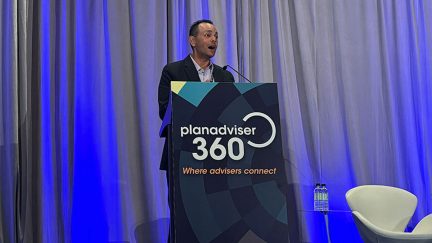Want the latest retirement plan adviser news and insights? Sign up for PLANADVISER newsletters.
43% of Small Plans Offer a Match
In 2014, 43% of the small retirement plans with up to $20 million in assets that Vanguard served offered a match, Vanguard indicated in its “How America Saves—Small Business Edition.” Launched in 2011, Vanguard Retirement Plan Access (VRPA) is a comprehensive service for plans of this size.
Sixty percent of VRPA plans with a match had adopted a safe harbor design, with 42% of plans matching 4% of employees’ salary.
Vanguard also found that only 23% of VRPA plans permitted their participants to contribute to the plan immediately. Another 40% require a year of service.
Twenty percent of VRPA plans had adopted automatic
enrollment at the end of 2014, with 60% of these plans automatically enrolling
participants at a 3% contribution rate. Of the 20% of plans that automatically
enroll participants, 40% automatically increase contribution rates, and 95% of
the plans with automatic enrollment use target-date funds as the default fund.
In 2014, VRPA’s plan-weighted participation rate was 73%. Among plans with
automatic enrollment, the participation rate was 84%. Participation varies
widely depending on demographics, Vanguard found. For participants with less
than $30,000 in income, participation averaged 49%. For those making between
$30,000 and $49,999, it rises to 66%; for those earning between $50,000 and
$74,999, it rises to 77%; for those making between $75,000 and $99,999, it
increases to 82%; and for those earning $100,000 or more, it averages 86%.
Likewise, participation increases with age. Among those younger than 25, 48% participate in their 401(k) plan; for those between 25 and 34, 63% participate; for those 35 to 44, 66% participate; for those 45 to 54, 69% participate; and for those 55 to 64, 70% participate.
NEXT: Impact of tenure
Tenure also has a significant impact on plan participation. In 2014, only 58% of those with less than two years on the job participated in their employer’s plan, whereas for those who have been with their company for 10 years or more, 78% participate.
Across all plans, VRPA participants save an average of 6.7% of their income. As with deferral rates, demographics have a strong influence on deferral rates. People making less than $30,000 save an average of 6.3%, whereas those making between $75,000 and $99,999 save an average of 7.7%. Age, as well, is a factor. Participants younger than 25 save an average of 4.8%. Those in the 55 to 64 age bracket are saving an average of 8.5% of their salaries.
During 2014, only 11% of participants saved the statutory maximum dollar amount of $17,500 ($23,000 for those age 50 or older). Participants who contributed the maximum dollar amount tended to have higher incomes, were older, had longer tenures and had substantially higher account balances. Vanguard also said it is noteworthy that 18% of participants deferred more than 10% of their salaries.
The average account balance for VRPA plans was $54,959 in 2014. The percentage of assets invested in equities averaged 73%.
Vanguard notes that 99.7% of employers in the United States are small businesses and employ half of all private-sector workers.
“We started offering DC plan services to small businesses,
recognizing that this segment of the market was underserved and overcharged,”
says Crystal Hardie Langston, principal and head of VRPA. “We are pleased with
the adoption of the service and the commitment by small business owners to
offer robust, thoughtfully constructed plans to their employees.”
The full “How America Saves—Small Business Edition” report, a complement to Vanguard's "How America Saves," can be downloaded
here.
You Might Also Like:

How to Establish Better Decumulation Options for Future DC Plans

US Retirement Market Evolves Amid Growth, Challenges



